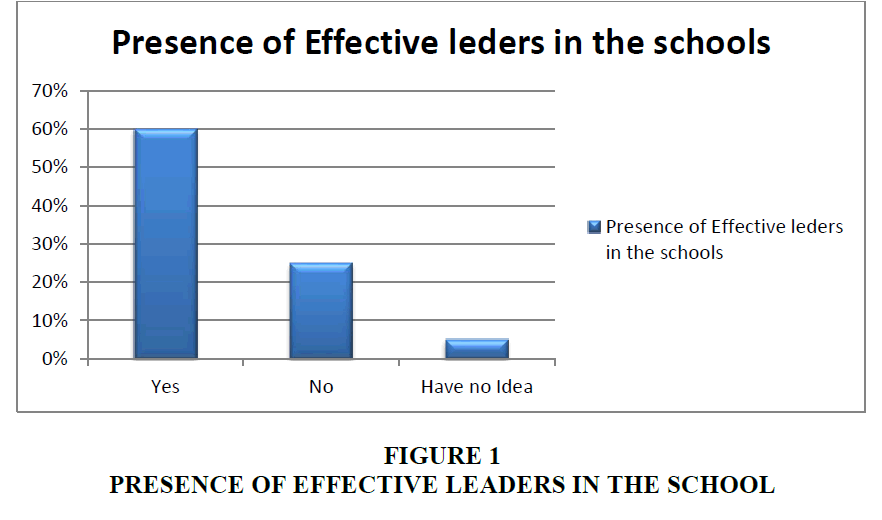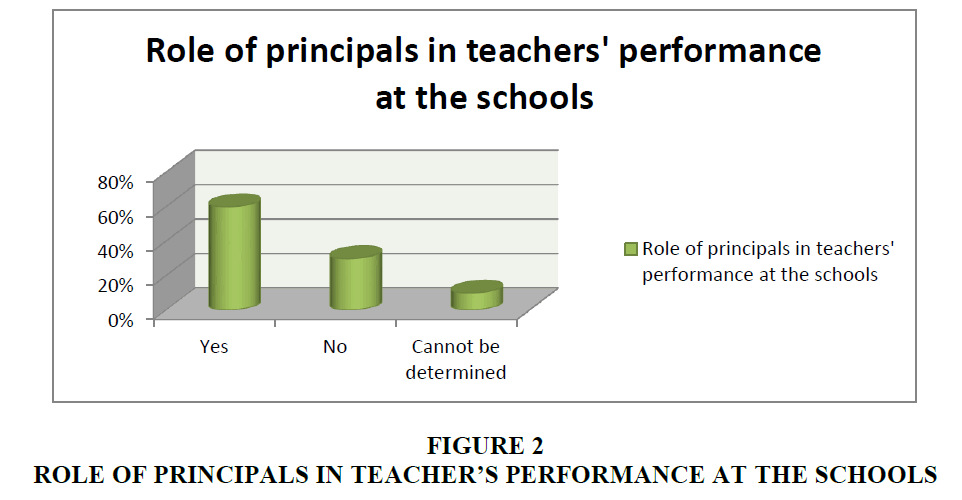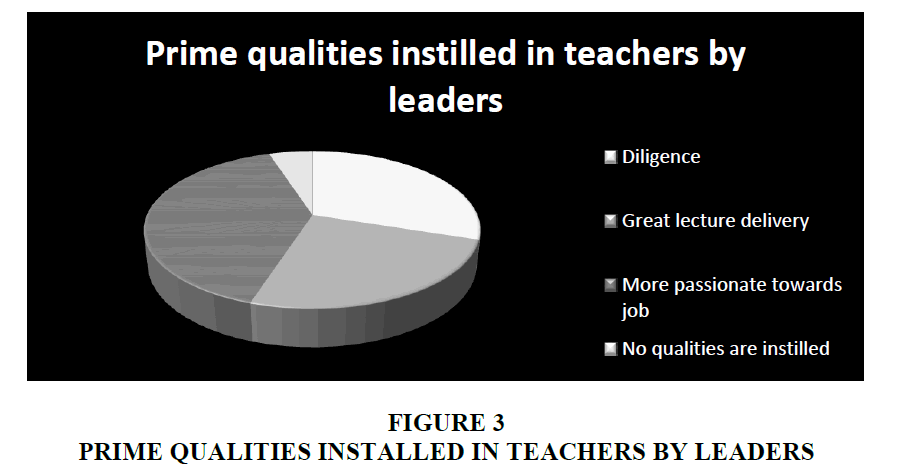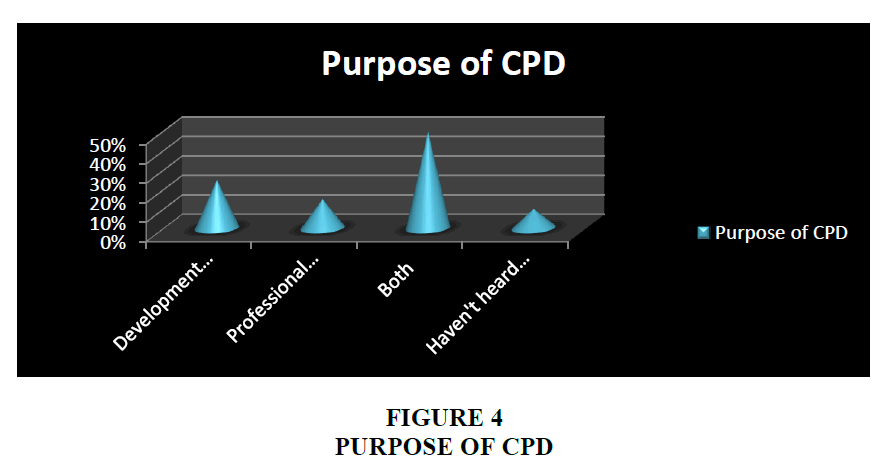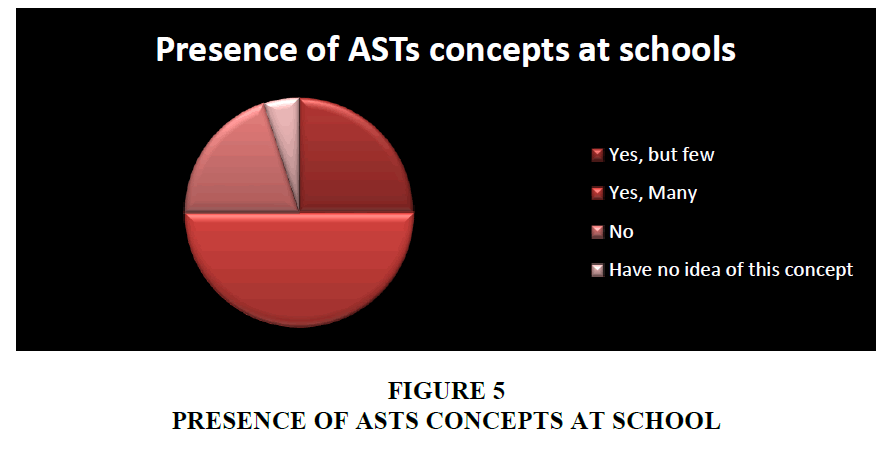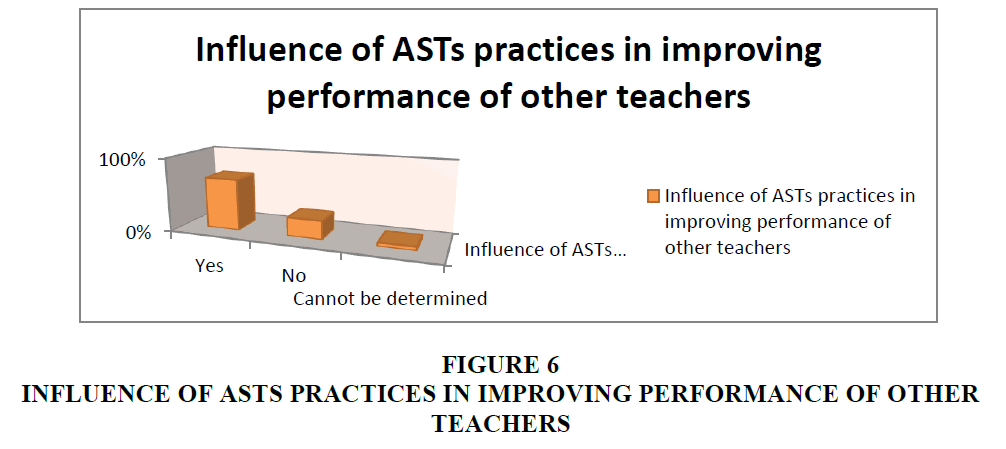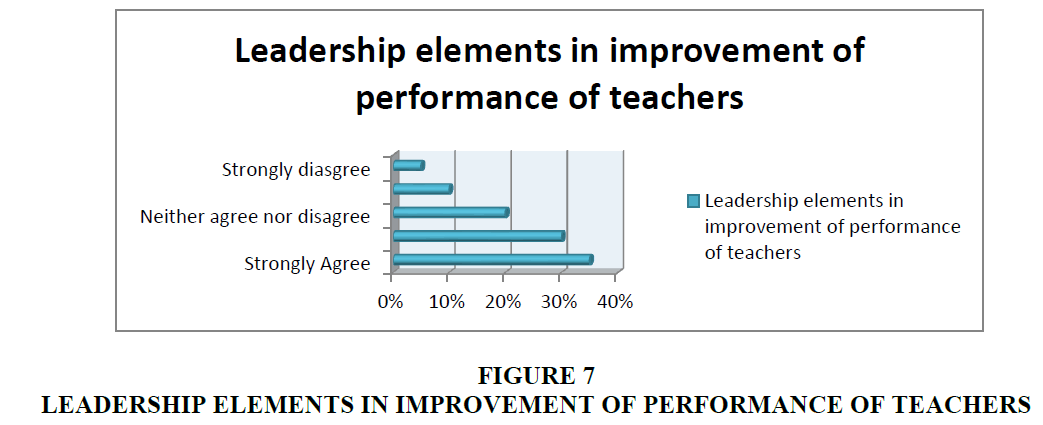Research Article: 2018 Vol: 17 Issue: 3
Role of Leaders in Developing Expertise in Teaching and their Influence on Teachers in Kazakhstan
Ziyadin Sayabek, Al-Farabi Kazakh National University
Madiyarova Ainur, Al-Farabi Kazakh National University
Tlemissov Ulan, Shakarim State University of Semey
Akybayeva Gulvira, Buketov Karaganda State University
Kurmangalieva Aizhan, Baitursynov Kostanay State University
Tastemirova Zhanar, Baitursynov Kostanay State University
Keywords
Education, Management in Education, Economics, Leadership.
Introduction
Teachers are capable of teaching the pupils in such manner that they excel in all the crucial spheres of life. The role of teachers is not restricted to teach the students in classrooms but also extends beyond this. Such teachers recognize that the interactions of the students are not only with the school teachers but they need to interact with the other complex systems beyond the school. In order to have such an attitude of the teachers in the secondary schools across the globe, the school settings are being encouraged to develop and promote effective leadership strategies. When the innovations and myriads of positive transformations are incorporated in the core working strategies of the schools, then the teachers automatically understand their precise role in the school and deliver their duties in order to meet the prime requirements of the students and management (Mulford, 2003).
The Principals and educators are challenged with meeting the increased demand of meeting the needs of teaching and learning. The leaders as the principals and administrators must instill passion among the teachers and demonstrate effective leadership practices to motivate the teachers so that they could more readily engage and energize the students (Bierly et al., 2016).
The following research report has been precisely written to evaluate the exact role of leadership practices in the development of expertise in teaching and in what manner the expert teachers or the principals help to develop expertise across various departments of the schools in Kazakhstan. The role of the teachers is quite pivotal in shaping the future of the students and this could be done at the initial level of school life only (Danielson, 2007). Hence, this report has been conducted to understand the elements of leadership and their influence on the teaching behavior. For a clear understanding, the report has been divided into a number of sections. The first section shows the clear aims and purpose of the research process that are to be attained to get the accurate results. This section is followed by the research question segment which talks about those questions that are to be answered in order to direct the process in a particular direction. The literature review section after this shows the viewpoints and perceptions of a number of researchers over the selected topic (Berry et al., 2010). Through this section, a number of ideas could be collected over the chosen topic. The research methodology section unveils the data collection and analysis method adopted for the research process and the discussion portion outlines the prime outcomes of the entire research process.
Aims And Purpose Of Research
This research has a precise aim of determining the role of the leaders in developing of expert teachers in the secondary schools in Kazakhstan. The leaders carry a potential to lead an organization along with its members in a successful direction. So, it is required that this research process finds out the prime strategies that the leaders adopt while creating a role model image in front of the followers. The report also has a purpose to evaluate that whether the teachers of the secondary schools are getting such opportunities to lead and influence both the policies and programs being framed for the them.
The aims of this report is not restricted to evaluate the role of the leaders in leading the teachers but also to determine the part played by the teachers in developing and installing the effective strategies in the management department of the schools. The influence of a great leader helps the subordinates to direct their resources and talents in a direction that is filled with minimum risks and challenges. So, this becomes another purpose of the report to critically analyze the potential of current leaders of school and whether they are using their capabilities for the betterment of the school as a whole. The primary focus of this report is also to determine that what strategies have been or could be adopted by the leaders to promote effective student engagement and learning. The role of effective leadership in sustaining teachers’ passion for teaching is also addressed in this report.
The prime research question for the research process is: to evaluate the role of leaders in developing expertise in teaching and their influence on teachers in secondary school in Kazakhstan
Literature Review
In the past decades, the importance and demands for students, teachers and school leaders have significantly increased in the secondary schools across the globe. Dave Burgess has successfully given a message in his work “Teach like a Pirate” that significantly challenges the teachers to meet the changing demands of the 21st century. Inspired from his work a number of school leaders are trying to work in order to inspire others. There are a number of reasons which forces the teachers to lose enthusiasm in teaching. The prime among them are the increasing role of bureaucracy in school management and the inadequate salaries that are unable to keep a pace with the inflation (British council, 2017).
A school leader is capable of transforming the school environment into a favorable one so that both the students and teacher could flourish easily. While principals are responsible to create environment that encourages all the elements of effective teaching, the superintendents on the other hand could create conditions that allow principals to become even better leaders. A research conducted in the year 2009 by New Leaders for New Schools, showed that more than half of the impact of the school on the better futures of the student could be accounted both to the effective ways of teaching by the teachers and also to the strategies adopted by the principals for the management of the schools (Rose & Reynolds, 2011). The reports proposed during these years suggested that the schools that have been making significant progress are the ones whose principals are playing a dynamic role in the management and whose roles have been recreated by the school authorities to incorporate more and more leadership qualities. The principals in most of the secondary schools are not only encouraged to deliver great roles in the classroom teachings but at the same time they are also being attuned to create an environment of diligence and success while effectively managing the human-capital pipeline (Caena, 2011).
While talking about the concept of Transformational leadership, Leithwood discussed that in order to lead smartly and wisely, the present day leaders should follow the three crucial steps of leadership. In the first step, he has asked the leaders to set a particular direction for leading. The leaders at the secondary school levels could set up a particular direction in which he will be leading the teachers and other management workers for the betterment of the school and students (Fuller & Goodwyn, 2010). The second step asks the leaders to develop faithful and loyal followers who are to be lead in a particular direction. For this step, the principals or the other leaders of the secondary schools could readily communicate the vision and missions of the school to the followers and win their support via effective communications. To improve the communication, the leaders could also ask the teachers and other followers to give their valuable feedbacks in crucial decisions for the school. The last step asks the leaders to redesign the institution in terms of new instructions developed (TDA, 2015). For such a purpose, the leaders in the schools could create a clear action plan that encourages the followers to follow precise steps and redesign the core strategies and working methodologies of the school in order to meet the new challenging demands of the students and the co-workers.
The leadership activities could also be incorporated at the secondary school by another notable concept of Advanced Skills Teachers or AST. An AST is a teacher who excels in the classroom teaching practices and at the same time is also paid by the management to share his skills and knowledge with the other teachers (Office for standards in education, 2011). The ASTs specialize in teaching and learning and their skills in this area are used within their own school. The work of the ASTs could be used to complement the work of the other members of the learning community in the schools. The AST pathway offers new careers to the teachers who want to stay in the classrooms but even want to excel in leadership too. The teachers at the AST post help the others to concentrate on good teaching skills and help in raising the standards of the teaching across the schools. With this approach most of the teachers could progress as excellent classroom practitioners without facing the pressure of management responsibilities. For this purpose, the teachers are also rewarded accordingly (Skills, 2001). The teachers who could maintain an excellent level as a classroom practitioner and wants to continue with the same and simultaneously could meet all the AST standards are preferred as the best candidates for the AST. The ASTs could prove as the best leaders for the other teachers in the school as these teachers with advanced skills knows all the strengths and weaknesses of the teachers and the school as a whole so they direct the teachers and other followers in a precise direction of success while introducing such strategies that promotes the specific strengths of the followers while curbing their weaknesses (Foundation, 2013).
Another related concept that could be discussed here is the CPD or Continuous Professional Development. CPD is a planned process through which the teachers try to develop their personal and professional qualities and even enhance their skills and knowledge to improve and develop the organization (school in this case) and its pupils. The general CPD framework for teachers has numerous features (Principals, 2013). The three precise elements of the teacher competence are their language proficiency, formal qualifications and the professional practices. A teacher could possess true leadership qualities only when a teacher is well versed with his professional practice and responsibilities. This strengthens a teacher to handle workplace issues and challenges in a more composed manner. The language proficiency often helps in creating a great communication channel with the students and all with the other leaders and co-workers. This further helps in creating an open environment where the suggestions and feedbacks of all the crucial participants in the school could be heard and also the prime mission of the ongoing projects in the school could be easily conveyed to the followers. The formal qualifications of the teachers help them to have a great grip over the subject they are teaching to the students. A teacher could lead well if they have a vast knowledge about his subject and even the followers place their trusts easily in such leaders (Lunenburg, 2010).
Research Methodology
A research methodology is a systematic plan for conducting any research and is incorporated in order to collect information and data and make crucial business decision. The methodology may encompass review of publications, journals and articles and even conduction of a number of surveys and interviews. This section seeks the answers for two main questions, i.e. how the data was collected and what methodologies were employed to analyze the collected information. For an impactful analysis, the research process adopted here would be the qualitative analysis. This has been done in order to get deep insights into the research process and get the prime reasons behind the questions raised. This methodology is also classified as descriptive analysis and they do not predict any situation instead they give deep analysis of the situation and asks the researchers to predict on their own (Glasow, 2015).
For the collection of data, a survey was conducted for the teachers so as to analyze their viewpoints and perceptions about the current and potential leadership activities. For surveying, a questionnaire is prepared with a number of questions and defined range of answers through which the respondents are asked to select their answers. The questionnaire medium is also adopted so that the participants could choose their answers without any pressure and hesitation and become more involved with the activities being carried out in the schools. Respondents were selected from five secondary schools in Semey area, whereby every school produced eighteen participants: 90 respondents as teachers were chosen randomly from the list which was given by school administrators. The country been chosen here is the Kazakhstan. Kazakhstan is one of the fastest developing countries in the world and its experience in the management of teachers and schools may be needed for managers and researchers for an in-depth study of Kazakhstan's secondary school. The respondents were reached via mails and other online platforms and in some cases personal interviews were also conducted. To select participants were used the simple random sampling techniques in order to diminish biases and increase the trustworthiness of the research (Mitchell & Jolley, 2012).
Below is an excerpt from the survey depicting the prime questions of the questionnaire?
Question1: Are there any Effective Leaders across Your School above the Teachers?
1. Yes
2. No
3. Have no idea
Figure 1 depicts that most of the respondents agree to this fact that there are ample of leaders in their schools and most of the crucial decisions are being taken under the influence of these leaders Moreover, the presence of leaders has allowed them to attain a different level of expertise in teaching and learning. Around 25% of the respondents still believe that there are no effective leaders in their schools and they are not getting a chance to work under a guidance of good leaders. Hence, their teaching abilities and talents are not being exploited in a proper manner.
Question2: Is there any Substantial Role of the Principals in Improving the Teachers’ Teaching and Learning?
1. Yes
2. No
3. Cannot be determined
Figure 2 analysis of the participants’ responses shows that the principals are playing a very important role in improving the performance of the teachers at the schools. Most of the respondents also consider that the presence of principals is quite crucial in determining the teaching abilities of the teachers. Some of the respondents still think that the teachers are themselves responsible for enhancement or degradation of their teaching and learning qualities and they are not influenced by the presence and absence of any leaders at their schools.
Question3: What Prime Qualities a Leader Could Instill in a Teacher While Working in a School?
1. Diligence
2. Great lecture delivery
3. More passion towards job
4. No qualities are instilled
Figure 3 depicts that the leaders are quite crucial in a school and tends to instill a number of qualities in the teachers. Most of the respondents consider that a good leader basically encourages a teacher to work hard in order to teach their pupils in a better manner. The respondents also equally consider that the teachers also learn to be more passionate towards the job by the leaders and they feel more encouraged at the workplace by maintaining a great balance between their job and personal life. Some of the participants in the survey also consider that a good leadership improves the lecture delivery style and quality of the teachers due to which the students are more and more involved in their studies and other classroom activities. (Ziyadin et al., 2018)
Question4: For What Purpose is the Continuous Professional Development (CPD) is required in Teaching and Learning?
1. For development of the personal qualities
2. Professional development
3. Both
4. Haven’t heard of this concept before
Figure 4 suggests that most of the respondents are aware of the concept of Continuous Professional Development and even considers that the CPD elements have a potential to influence a teacher both at the professional and personal levels. With the introduction of this (+) concept a teacher easily excels in his professional life and by being satisfactory with his work he simply manages his personal issues very well. So both the lives are highly influenced by the concepts of CPD. Also, some of the respondents haven’t heard of this concept prior to this survey because the leadership elements have not been so strong at their schools till now.
Question5: Are there any Advanced Skills Teachers (ASTS) at Your School?
1. Yes, but few
2. Yes, many
3. No
4. Have no idea of this concept
Figure 5 shows that in most of the secondary schools in the Kazakhstan the concept of ASTs exists and is being acknowledged by all the participants. The Advanced Skills Teachers are not working for their individual development but they are promoting the weaker teachers to learn and perform in an outstanding manner. Due to this concept many teachers have managed to become a great asset for their institution. The above chart indicates that most of the respondents have replied that many ASTs elements exists in their schools and are being readily practiced by all the participants of the school. Only few of the respondents believe that there is no such concept in their school and the teachers cannot be good leaders in a way guiding the co-workers in terms of performance improvements.
Question6: Does the Existence of ASTS Influence the Teaching Abilities of the other Teachers in the School?
1. Yes
2. No
3. Cannot be determined
(Figure 6) It could be easily deduced that the presence of Advanced Skill teachers is quite important for a school as they not only work for their individual benefits but also encourage the other teachers to deliver good lectures and improve their skills in their subjects. Among the respondents, some of them still think that the concept of ASTs is not acceptable in their schools and only principals could work as a leader by encouraging all the teachers in a successful direction. According to their perceptions the teachers could not learn to expertise in their works from their co-workers.
Question7: The Leadership Elements in a School improve the Performance of the Teachers. To what Extent do you agree to this Statement?
1. Strongly Agree
2. Agree
3. Neither Agree nor Disagree
4. Disagree
5. Strongly Disagree
Figure 7 depicts that the leadership elements are quite crucial for a school and teachers learn a lot from the leaders. The influence of good leaders is always positive and they guide the teachers to perform in a best manner. Moreover the teachers learn to tackle any tough situation in a composed manner when they are working under any good leader. Some of the respondents still think that the leaders are not crucial in any school and the role of the principal is just restricted to framing and passing rules and policies. (Ziyadin et al., 2018).
Discussion
The above collected data and analysis has given the answers to most of the research questions that were put forward at the beginning of the report. The leadership practices in all the possible models have a central goal to ensure and maintain the improvement practices in the schools which directly influences the quality of the teaching. The research has undoubtedly unveiled that the quality and effectiveness of leadership could be easily evaluated in the terms of the extent the teachers are motivated and the effectiveness they adopt in delivering their services for the school. The improvement of the teachers’ performance is a significant aim of the leaders and they try to achieve them by adopting a number of actions (Vadaya, 2012). The leaders help the teachers by giving them a perfect vision and directions for and even provide them motivation to perform in a better manner. The leader plays a managerial role by providing a personal support to the teachers and even constructs an appropriate environment so that the followers could effectively attain their goals and the organizational goals while utilizing the available resources in the schools (Storey & Walmsley, 2014).
The research has also suggested that it is the prime duty of the principal to build a unique working environment for the teachers which not only enhance the productivity of the teachers but at the same time allow them to communicate easily with one another and even convey their viewpoints to the leaders. The leaders when discharge their duties effectively also play a crucial role in establishing a creative relationship between the teachers and the entire community. This ultimately results in professional development of the teaching staff so that they gain another level of expertise in the ways of their teaching (Firmaningsih-Kolu, 2015). The principals all over the secondary schools have also played a major role in providing a number of opportunities for the teachers’ learning simply by initiating myriads of professional development programs or by providing mentors to the teachers at the individual levels. Such an approach creates a supportive environment for the leaders so that they could be extremely motivated while teaching their students.
The evidences in the research have also suggested that communication channels been established by the leaders help them to closely analyze the teachers’ emotions which highly impacts the quality of services discharged at the schools (Davidson & Dunlop, 2012). These emotions encompass job satisfaction, anxiety, depression due to working hours and efficacy in service delivery. A leader alone cannot motivate the teachers towards successful implementation of actions but the teachers also have to gear up to cooperate with the leaders by evaluating the needs to change their perceptions towards performing a certain action or implementing crucial decisions. A change in perception may help the teachers to look towards the other possibilities which could be used to attain the goals for the company. The motivation received by the teachers through the leaders could be considered as the close interaction between the individuals’ aims and the goals been set for the company (Roekel, 2008).
The research process unveils that in order to increase the teachers’ capacity the leaders have to provide a strong and supportive feedback. For this approach the leaders could share the experience and communicate the exact reasons of implementing any change plans in the schools. The leaders if delivers their duties well, then there are high chances that they give great attention to the teachers at the secondary schools by meeting their particular needs and indirectly raising their satisfaction towards the job. The other researchers working in this field have also settled over this fact that the teachers who are autonomous at their workplace, feels more satisfied with their services and school’s working policies as compared to their counterparts (NBPTS, 2008). So, in this case, the prime role of the principals or the other leaders at the school is to provide the educators with the opportunities that simply increase the involvement of the teachers in a number of managerial and decision-making activities of the school. The leaders succeed in establishing such an environment simply by apply more collaborative and less autocratic leadership styles as this flexibility would ensure the more contribution of the teachers in the managerial decisions of the schools apart from just teaching. The principals who regularly share their experiences with the teachers are perceived as the most loyal person by the followers and hence the teachers develop an intention of being more satisfied (Ofsted, 2003).
The Advanced Skill teachers at the school level are employed when they are able to demonstrate that they could easily meet the professional standards of the role they are being assigned. The ASTs are appointed in a school with a precise aim raising the standards of teaching and learning in the classrooms and even provide a strong support to the other teachers by encouraging them to learn from the ASTs the way of managing the students. The ASTs are expected to undertake a number of tasks that strengthens the management. These tasks encompass the provision of support to the teachers who are unable to anticipate the learning needs of the students and hence are failing to meet the standards of the schools. The ASTs are also required to assist the colleagues in determining the priorities of the schools and which tasks are to be dealt at the first place. These teachers with advanced skills make learning easier for the other teachers by demonstrating the excellent teaching skills while utilizing a number of model lessons which communicates the true essence of the points the ASTs wants to teach (NEA, 2012). The ASTs not only assists the teachers with new teaching and learning techniques but also helps the schools as a whole by induction of the new teachers in which they are assessed and evaluated against the regulatory standards of the schools.
The ASTs are also involved in Continuous Professional Development (CPD) of the teachers by allowing the teachers to learn the professional qualities from the experienced and smart teachers in the schools. Through the learned activities a teacher learns not only to improvise his service delivery strategies but also enhance his personal perceptions to give a new direction to his thoughts and opinions. Through CPD activities, the teachers learn to meet the challenges in an enhanced manner and even participate more effectively in the managerial activities of the school.
Conclusions And Recommendations
The above observations in the entire research process have unveiled a number of facts related to leadership and its influence on the learning and teaching ways of the teachers. The teachers have a great opportunity to learn from their leaders as the latter have the capability to direct the hard working teachers in a better direction so that their talents could be effectively exploited for the betterment of the school. There is no doubt that the ASTs or the Advanced Skilled Teachers are crucially important for a school. These teachers not only improve their own teaching levels but also teach the other teachers in the organization to effectively deliver their services and face the upcoming challenges in a more organized manner. The presence of ASTs in schools is simply a form of leadership in which the skilled teachers reach to the other less developed ones in order to influence them in some or the other manners. The ASTs guide the other weak teachers and provide them all possible solutions for the challenges.
Another related concept of CPD or Continuous Professional Development has also allowed the teachers to concentrate on the improvement strategies both at the professional and personal levels. The CPD elements are directly or indirectly related to the ASTs qualities. A skilled teacher will automatically work for himself and even for the others in order to provide successful opportunities to the school. A teacher with a strong background of CPD is considered more passionate towards his work and even set an example for the colleagues and for the students to excel in their services and studies. A professionally and personally sound teacher has a number of effective ways to communicate with the co-workers and even the authorities and efficiently convey them the actual working conditions and future opportunities for the school.
The prime recommendations for the above research report are as follows:
1. The leaders appointed for the school should be appointed by concerning all the participants in the school so that they feel involved in the crucial decision making process of the school.
2. The leaders should encourage clear communication among the followers and other leaders so as the actual essence of the missions and objectives of the company is conveyed in the company.
3. It is also recommended that the concepts of ASTs and CPD must be encouraged among all the teachers within the schools from the starting levels only so that they could instill them in every service they deliver.
4. The leaders are also expected to gather a number of feedbacks from the followers at regular periods so that the former ones know where they are lagging or in which possible spheres there could be major loopholes in the coming future.
5. The teachers are also suggested to follow the instructions given to them and even cooperate with the leaders for effective implementation of the innovative concepts across different units of the school.
References
- Berry, B., Daughtrey, A. & Wieder, A. (2010). Teacher leadership: Leading the way to effective teaching and learning. Retrieved from http://files.eric.ed.gov/fulltext/ED509719.pdf
- Bierly, C., Doyle, B. & Smith, A. (2016). Transforming schools: How distributed leadership can create more high-performing schools. Retrieved from http://www.bain.com/publications/articles/transforming-schools.aspx
- Bolitho, R. & Padwad, A. (2013). Continuing professional development lessons from India. New Delhi: Ishtihaar.
- British council (2017). Frameworks of continuing professional development. Retrieved from https://www.britishcouncil.in/teach/continuing-professional-development
- Caena, F. (2011). Literature review quality in teachers? continuing professional development. Retrieved from http://ec.europa.eu/dgs/education_culture/repository/education/policy/strategic-framework/doc/teacher-development_en.pdf
- Danielson, C. (2007). The many faces of leadership. Educational Leadership, 65(1), 14-19.
- Davidson, G. & Dunlop, F. (2012). Going forward: Continuing professional development for English language teachers in the UK. Retrieved from http://englishagenda.britishcouncil.org/sites/ec/files/B413%20CPD%20for%20Teachers_v2_0.pdf
- Firmaningsih-Kolu, Y. (2015). The role of the principal?s instructional leadership at schools in Indonesia. Retrieved from https://jyx.jyu.fi/dspace/bitstream/handle/123456789/49654/URN%3ANBN%3Afi%3Ajyu-201605082444.pdf?sequence=1
- Foundation, W. (2013). The school principal as leader: Guiding schools to better teaching and learning. New York: The Wallace Foundation.
- Fuller, C. & Goodwyn, A. (2010). Advanced skills teachers: Summary report. Retrieved from http://centaur.reading.ac.uk/6995/1/CF-AG_Advanced_Skills_Teachers_Final_Report.pdf
- Glasow, P. (2015). Fundamentals of survey research methodology. Retrieved from https://www.mitre.org/sites/default/files/pdf/05_0638.pdf
- Lunenburg, F. (2010). The principal as instructional leader. National Forum of Educational and Supervision Journal, 27(4), 1-7.
- Mitchell, M. & Jolley, J. (2012). Research design explained. Victoria: Sage
- Mulford, B. (2003). School leaders: Changing roles and impact on teacher and school effectiveness. Retrieved from https://www.oecd.org/edu/school/2635399.pdf
- NBPTS (2008). What teachers should know and be able to do. Retrieved from http://www.nbpts.org/sites/default/files/documents/certificates/what_teachers_should_know.pdf
- NEA (2012). Transforming teaching: Connecting professional responsibility with student learning. Retrieved from http://www.nea.org/assets/docs/Transformingteaching2012.pdf
- NET (2015). Career framework and continuing professional development for teaching assistants. Retrieved from https://www.unison.org.uk/content/uploads/2015/09/23305.pdf
- Office for standards in education (2011). Advanced skills teachers: Appointment, deployment and impact.
- Ofsted (2003). Advanced skills teachers. Retrieved from http://dera.ioe.ac.uk/4794/1/Advanced%20skills%20teachers%20-%20200203%20(PDF%20format).pdf
- Principals, N.A. (2013). Leadership matters: What the research says about the importance of principal leadership. Retrieved from http://www.naesp.org/sites/default/files/LeadershipMatters.pdf
- Roekel, D. (2008). Changing role of school leadership. Retrieved from http://www.nea.org/assets/docs/PB09_Leadership08.pdf
- Rose, J. & Reynolds, D. (2011). Teacher?s continuing professional development: A new approach. Retrieved from http://www.fm-kp.si/zalozba/ISBN/978-961-6573-65-8/219-240.pdf
- Skills, D.O. (2001). Advanced skills teachers: Promoting excellence. Retrieved from http://webarchive.nationalarchives.gov.uk/20130401151715/http://www.education.gov.uk/publications/eOrderingDownload/DfES-0755-2001.pdf
- Storey, L. & Walmsley, B. (2014). Continuing professional development for teachers. Parliamentary Party Committee. Retrieved from http://www.ldea.co.uk/assets/documents/policies/CPD_Report.pdf
- TDA (2015). Professional standards for teachers: Advanced skills teacher. Retrieved from https://www.steunpuntopleidingsscholen.nl/wp-content/uploads/2015/06/42-Advanced-Skills-teacher-standards.pdf
- Vadaya, T. (2012). Continuing professional development of teacher educators: Vision and action. Retrieved from http://www.teindia.nic.in/Files/Position_Papers/Odisha/Position-paper%20-%20(T-Vadeya).pdf
- Ziyadin, S., Shash, N., Kenzhebekova, D., Yessenova, G. & Tlemissov, U. (2018). Data on the role of leadership in developing expertise in teaching in developing country. Data in brief, 18, 1127-1133.
